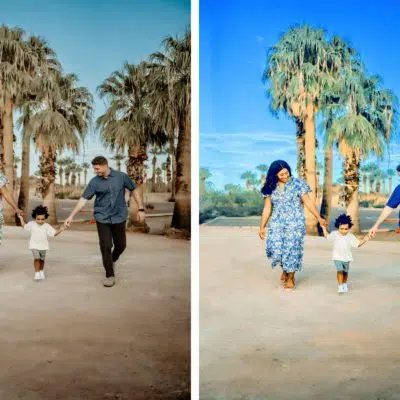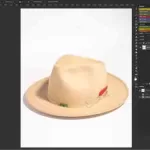9 Ways to Use Color Change to Enhance Your Product Photos
Dec 31, 22 6 min read
Changing the colors of items, products, and backgrounds is a great way to enhance your product photos. And sometimes it’s even necessary.
You might need to perform a color change because you didn’t have the right variant available at the shoot. Or you might be going for a theme on social media, and a color change will help old assets fit your new visual aesthetic. These are just a couple of instances. We rounded up a bunch of other ways to use and scenarios in which color change edits may be appropriate.
Get completely natural color changes, done by pro designers for 99¢ per image
1. Create an animated GIF or video
It’s not enough to simply have still product images anymore. Modern brands incorporate user-generated photos, 360-degree shots, animated GIFs, and even product videos into their content mix. You can use this media across channels, including your website, product pages, social media, email, and more.
So if you want to make your product photography investment go the extra mile, you can apply the color change edits and turn those shots into an animated GIF, cycling through each variant.
2. Survey your customers on the color preference for this item
It’s critical to cultivate relationships with your customer base. One way to kickstart and cultivate relationships with your customers is to ask their opinion.
You can survey your customers to see which colors they like best for new variations of your existing products. This will not only boost engagement, but your audience will also feel more invested in the product itself, given the fact they had a say in its creation. They may even feel more inclined to make a purchase.
Fashion designer Tery D’Ciano frequently uses Instagram polls in her stories to see what her customers want to see in her products. She’ll often share images or videos of fabrics, buttons, and other details and ask her audience which ones they prefer.
You can take a similar approach and use “photos” of the new color options to give people a visual to help them decide. You can do this in your Instagram stories or on other social channels, as well as send a poll to your email list and add a pop-up to your website.
3. Test new color variants
One ecommerce strategy is to launch with a single or small number of color variants and later expand, adding new variants as time goes on. You can test these new variants before making them a permanent addition to your product lineup, and possibly even before investing in manufacturing the actual items.
You might even make it a pre-order, limited edition type of campaign. This can boost sales and help you reduce lost capital on expired or unsellable products while you test demand.
See how effortlessly Coola’s Summer Crush tinted lip sunscreen changes to Nude Beach, Coral Reef, and finally to Firecracker? This would be a great way to test each new hue before investing in a full launch.
4. Repurpose photos for holidays or other themes
Brand colors, fonts, and prints are all distinctive visually recognizable elements of a brand. If you have a pastel palette throughout your website, more saturated RGB hues, or a neon palette, color correction may make your product images more aligned with your branding.
Maybe you have some lifestyle product photography and you want to change the color scheme to fit your email design or your website design. Or maybe it’s the holidays and you want to create a more seasonal background, like we did for the color change in this product image:
How to Change the Background Color of a Picture
5. List new product variants instead of shooting new photos
If a model is wearing your clothing product, you take one photo, and then change the color of the clothing for all other variants. And then present all those color variant options online in a way so your customers can toggle between colors when they see a change in the product but the model remains still.
Amazon merchants often use this technique. See how this long sleeve casual pullover comes in 18 different shades for any taste from mint to wine red.
This marketing approach might help end users quickly evaluate different color options and pick the one they like—without being distracted by changes in different model poses.
Get completely natural color changes, done by pro designers for 99¢ per image
6. Launch seasonal or event-inspired versions of your product
Seasonal and limited edition products are a great way to boost sales and excitement, while keeping your brand fresh. Flex Watches is an excellent example of a brand that does this well. It frequently launches new variants of its classic products in support of different causes, such as its autism watch listed among its original styles:
Maybe you sell sunglasses and you want to make a limited edition breast cancer awareness version in pink. Instead of doing a new shoot, you can change the existing product photos to the hue of pink that the product will be.
This also means you don’t have to wait for the limited edition products to ship and be available for the shoot. This way, you can technically launch and sell it before you even have it.
How Should I Choose the Color for My Product Background?
7. Create an image of a product collection
One way to showcase the variety and depth of your product line is to create collection images. However, to do this on set, you need to have all the products in all the colors available for the shoot. This isn’t always possible, or easy.
Color change is almost always possible, so you can apply the edits in Photoshop and then combine your new individual images into a single collection image.
Sustainable apparel brand Pact uses this visual approach for some of its product imagery. The below screenshot shows the hero image on its website homepage, giving users an instant glance at the range of color options available in a single product.
8. Build product bundles and multi-packs
Product bundling and multi-packs are effective conversion tactics because they offer convenience and higher perceived value for the customer. And it’s great for retailers because it moves more inventory and boosts cart value.
Rather than taking product shots of the bundles together, you can use color change edits to duplicate the products and then edit them together if needed.
Athleticwear brand Girlfriend Collective sells bundles on its online store. While theoretically it may have had all the photos it needed in all the colors available, it also could have simply taken a single product shot of the bra and then applied color change to the bundled image.
All you need is a single product shot to use as a base if you want to sell bundles or multi-packs.
9. Save time and money by not having to shoot every variant but just one
Product photos cost money, and shooting each variant quickly adds not only money but time to an already busy photoshoot. Some brands opt to shoot just one product photo of each item, saving variants and color changes for later rather than shooting each individual color option.
It’s not unusual for one piece of clothing to be produced in 10 or even 20 different shades, so the savings achieved by this photo editing shortcut can amount to thousands of dollars and hours in human work hours.
You can see how well a color change service from Path works in the photos below from Motif Concept Store. It’s hard to tell which is the original and which was edited!
Change colors to maximize your investment
These basic manipulations help achieve not-so-basic goals: connect with buyers, cost-effective product development and diversification, and remain competitive in a fast-paced ecommerce environment.
Luckily, you don’t have to do the color change yourself. Instead, task them to a professional photo editing studio like Path. We’re here to lend a hand 24/7, making sure every picture is perfect, down to the last pixel.




